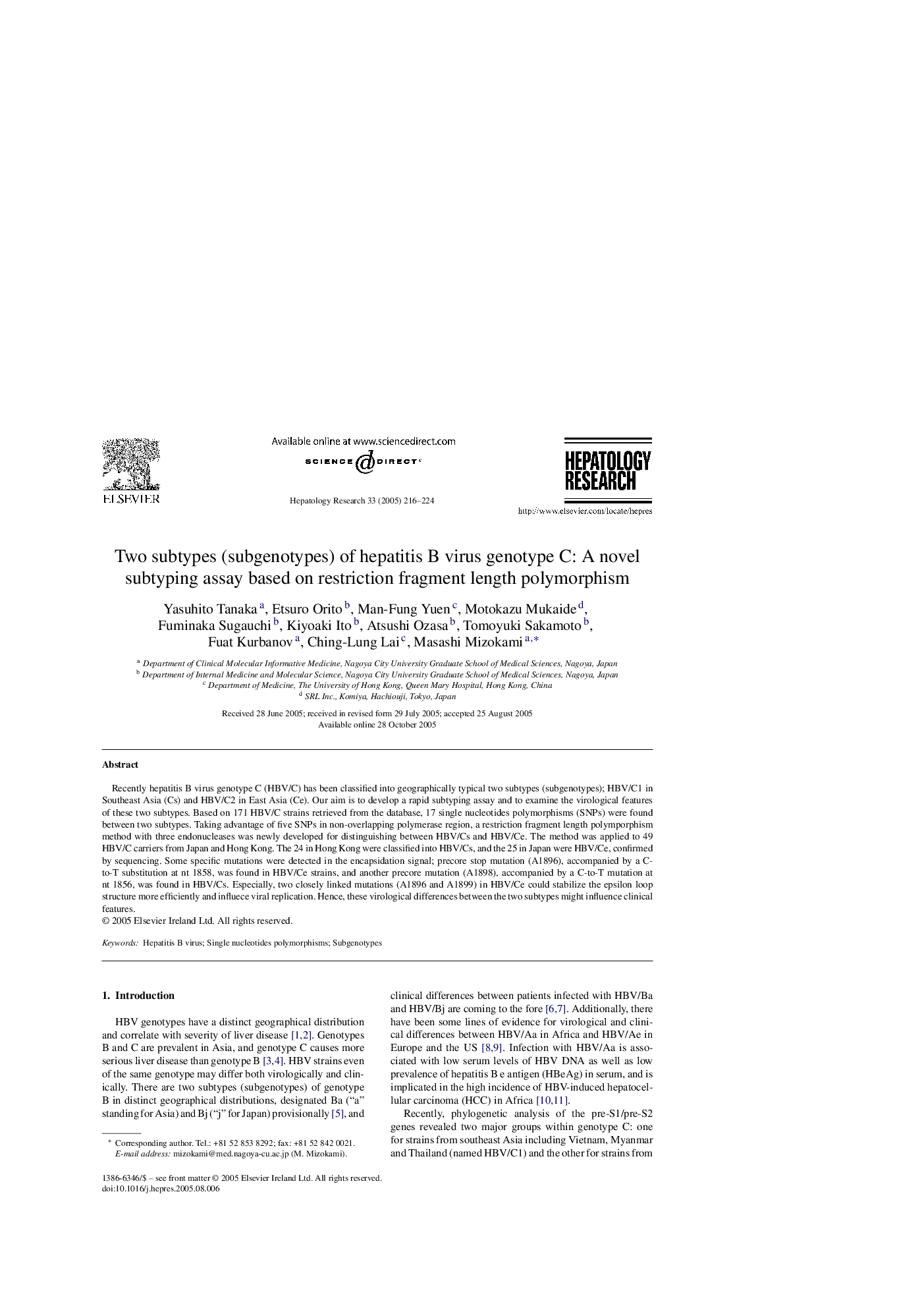| Article ID | Journal | Published Year | Pages | File Type |
|---|---|---|---|---|
| 9252788 | Hepatology Research | 2005 | 9 Pages |
Abstract
Recently hepatitis B virus genotype C (HBV/C) has been classified into geographically typical two subtypes (subgenotypes); HBV/C1 in Southeast Asia (Cs) and HBV/C2 in East Asia (Ce). Our aim is to develop a rapid subtyping assay and to examine the virological features of these two subtypes. Based on 171 HBV/C strains retrieved from the database, 17 single nucleotides polymorphisms (SNPs) were found between two subtypes. Taking advantage of five SNPs in non-overlapping polymerase region, a restriction fragment length polymporphism method with three endonucleases was newly developed for distinguishing between HBV/Cs and HBV/Ce. The method was applied to 49 HBV/C carriers from Japan and Hong Kong. The 24 in Hong Kong were classified into HBV/Cs, and the 25 in Japan were HBV/Ce, confirmed by sequencing. Some specific mutations were detected in the encapsidation signal; precore stop mutation (A1896), accompanied by a C-to-T substitution at nt 1858, was found in HBV/Ce strains, and another precore mutation (A1898), accompanied by a C-to-T mutation at nt 1856, was found in HBV/Cs. Especially, two closely linked mutations (A1896 and A1899) in HBV/Ce could stabilize the epsilon loop structure more efficiently and influece viral replication. Hence, these virological differences between the two subtypes might influence clinical features.
Keywords
Related Topics
Health Sciences
Medicine and Dentistry
Gastroenterology
Authors
Yasuhito Tanaka, Etsuro Orito, Man-Fung Yuen, Motokazu Mukaide, Fuminaka Sugauchi, Kiyoaki Ito, Atsushi Ozasa, Tomoyuki Sakamoto, Fuat Kurbanov, Ching-Lung Lai, Masashi Mizokami,
